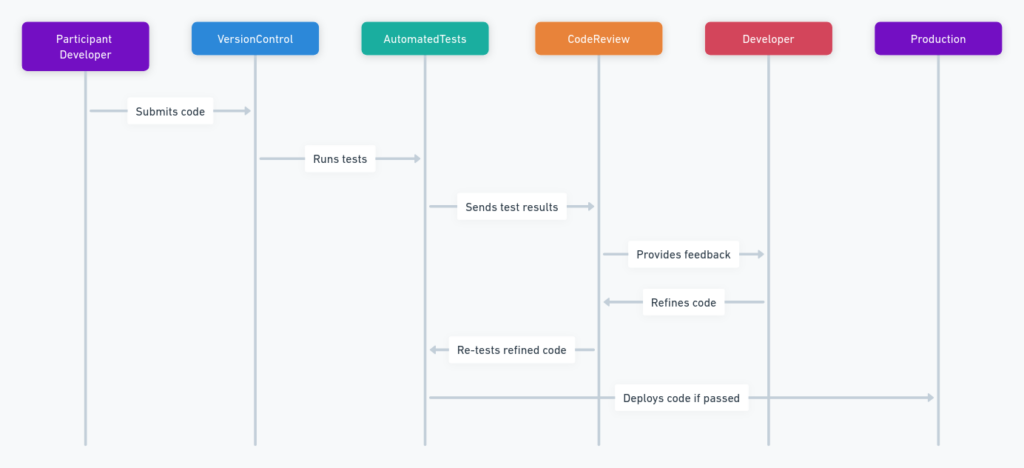Technical debt in software development refers to the costs incurred from choosing an easy or limited solution now instead of taking longer-term approaches that would offer better results.
Like financial debt, technical debt accrues interest over time in the form of extra work that must be completed in the future. It often results from hasty projects or short-term prioritization decisions.
Understanding and managing these debt are critical in order to protect software quality, performance and maintainability over time.
While not all these debt is bad - sometimes incurring some debt may even help meet deadlines or achieve important business goals - what's essential is managing it effectively so as not to allow it spiral out of control.
Implications of Technical Debt
Technical debt or technical deficit can be defined as a source of financing that results from debt-load accumulation over time.
Technical debt refers to a concept in software development where tradeoffs must be made between short-term gains and long-term productivity.
In essence, these debt occurs when development teams take shortcuts in order to accelerate delivery of projects or updates more quickly but at the cost of increasing future work load.
Ward Cunningham first introduced this metaphor in order to illustrate why sometimes it may be possible to build software quickly but with later revisions necessary in order to optimize it fully.
Consequences of Accumulating Technical Debt

Accumulated technical debt can have dire repercussions for both individual projects and organizations as a whole. Common concerns related to these debt accumulation include:
Increased Maintenance Costs:
As technical debt accumulates, its complexity increases exponentially and routine maintenance becomes both time-consuming and costly.
Reduced Code Scalability:
Debt-laden code often lacks the structures needed for efficient scaling, hindering our ability to add new features or handle larger user loads efficiently. This may prohibit us from quickly adding new features or handling increased user loads efficiently.
Decreased Developer Productivity:
As developers spend more time deciphering and fixing spaghetti code, their productivity decreases - stretching timelines and blowing out budgets in the process.
Degraded Product Quality:
Shortcuts in software development may lead to bugs and unreliable functionalities that compromise its quality, jeopardizing its integrity as an end product.
Increased Risk of Failure:
High levels of these debt increase the risk of project or system failure due to unresolved issues and an insufficient response to root-cause problems.
Impact on Code Quality and Efficiency

Effects of Technical Debt on Code Quality
As technical debt accumulates, code quality significantly deteriorates. At first unseen, its impact becomes increasingly noticeable over time. Poorly structured code can lead to multiple problems:
Bug Frequency:
Shortcuts can often result in more bugs and unexpected behavior, necessitating additional debugging time and ultimately creating unreliable software.
Code Readability:
Accumulated debt can create code that is difficult to read and comprehend, making the onboarding of new developers more challenging and time-consuming.
Refactoring Challenges:
With increased debt comes greater need to rewrite or refactor code in order to add enhancements or address minor issues that could have been avoided had cleaner, well-designed code been written initially.
Influence of Technical Debt on Project Efficiency
Technical debt threatens both the quality and delivery efficiency of code. Its effect can manifest itself in various ways:
Delayed Timelines:
Due to additional time needed for untangling and refactoring code, projects often exceed their planned timelines.
Increased Overhead Costs:
Resolving these debt requires additional resource allocation and is likely to add significantly to project management and execution overhead costs.
Decreased Team Morale:
Continuously dealing with technical debt can be draining for development teams, leading to frustration and decreasing morale, which in turn reduces teamwork and communication; further impacting project efficiency.
Impaired Agile Practices:
Technical debt can have a dramatic effect on a team's ability to respond swiftly and appropriately to new requirements, rendering them less competitive and slower in adapting to market changes.
Understanding these impacts further illustrates why managing these debt should not only focus on code quality improvement, but also on creating an efficient and productive development environment.
Addressing these debt proactively can mitigate these potential negative repercussions and ensure software development efforts remain both high-quality and cost-efficient.
Effective Strategies for Addressing Technical Debt
Identification of Technical Debt in Software Development
Technical debt can threaten both code quality and project sustainability, starting by recognizing its signs. These could include excessive code complexity, duplication, or lack of documentation.
Development teams should conduct regular code reviews to detect anomalies or inefficiencies early; additionally incorporating feedback from debugging/testing phases helps detect debt related to performance issues or bugs that compromise software integrity.
Best Practices for Addressing Technical Debt
Once technical debt is identified, effectively managing it requires several best practices.
First and foremost, prioritize debt resolution according to its impact on software's functioning and development processes - for instance debts that threaten project deadlines or user experience should receive immediate attention.
Secondarily, designate specific time in development cycles dedicated to debt resolution such as through dedicated sprints dedicated to refactoring or optimizing existing code.
Thirdly, foster an accountability culture among developers so they report debt promptly and accurately.
- Prioritization: Focus first on resolving the most pressing problems.
- Time Allocation: Set aside sprints specifically for debt management.
- Culture of Accountability: Foster transparency and responsibility.
Tools and Techniques for Handling Technical Debt (TD)
Tools and techniques exist that can assist teams in managing technical debt effectively. Version control systems like Git help track changes and facilitate rollback when necessary, while static code analyzers like SonarQube can automatically detect potential code issues before they become entrenched in debt.
For larger teams, using issue tracking systems like Jira will ensure all identified debts are logged, tracked, and addressed according to priority and impact.
Automated testing frameworks help maintain high code quality over time, minimizing these debt accumulation by quickly detecting issues early.
When used together, these tools offer an effective approach to managing these debt - keeping software projects healthy and maintainable over their lifespan.
Book a Demo and experience ContextQA testing tool in action with a complimentary, no-obligation session tailored to your business needs.
Conclusion
Technical debt is an unavoidable part of software development that, when handled strategically, does not impede progress. It results from necessary tradeoffs that should be addressed accordingly and could serve as a bridge to future improvements if appropriately addressed.
But left to accumulate without plan it could lead to decreased code quality, increased costs, or project failure - therefore development teams must prioritize these management and invest in regular refactoring activities to maintain system functionality and efficiency for optimal system health.
Managing these debt requires making informed decisions that balance immediate needs against long-term project health when handling these issues arises.
Also Read - Can one smarted QA carry the load of other average testers?
